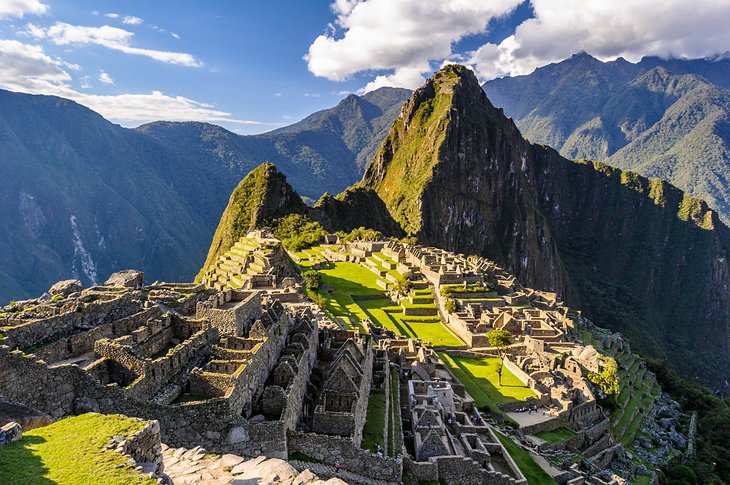Introduction
Historical sites stand as silent witnesses to the unfolding of human civilization, preserving tales of triumphs, tragedies, and transformative moments. These sites, spanning the globe and encompassing a vast expanse of time, offer a unique window into our collective past. This article embarks on a journey through history, delving into the significance, diversity, and allure of historical sites. From ancient wonders to modern monuments, we will explore the narratives they hold, the cultural tapestry they represent, and the importance of their preservation.
The Significance of Historical Sites
Cultural Identity: Historical sites embody the cultural heritage of communities, serving as symbols of identity, pride, and continuity. They are a testament to the ingenuity, creativity, and resilience of past civilizations.
Educational Resources: These sites are invaluable educational tools, offering insights into historical events, social structures, and technological advancements. They provide tangible connections to history that textbooks cannot replicate.
Time Travel Through Architecture: Architecture is a tangible reflection of a society’s values and aspirations. Historical sites showcase diverse architectural styles, construction techniques, and artistic expressions across different eras.
Preservation of Memory: Historical sites preserve collective memories, ensuring that significant events and stories are not forgotten. They offer a tangible link to the past, allowing us to learn from our predecessors.
Tourism and Economic Impact: Many historical sites attract tourists, contributing to local economies and fostering cultural exchange. Tourism can provide funds for site maintenance and community development.
Ancient Marvels
The Pyramids of Giza, Egypt: Standing as a testament to ancient Egyptian engineering and belief systems, these pyramids have captivated the world for centuries, inspiring awe and wonder.
Machu Picchu, Peru: Nestled in the Andes Mountains, this Incan citadel is a marvel of architectural precision, offering a glimpse into the sophisticated urban planning of the Inca civilization.
The Great Wall of China: Winding across the Chinese landscape, the Great Wall is a testament to human determination and serves as a physical embodiment of China’s historical struggles and triumphs.
The Colosseum, Italy: A symbol of ancient Roman engineering prowess, the Colosseum hosted gladiatorial contests and grand spectacles, showcasing the entertainment preferences of the time.
Medieval and Renaissance Gems
The Parthenon, Greece: An icon of classical Greek architecture, the Parthenon stands atop the Acropolis in Athens, embodying the ideals of harmony, balance, and democratic governance.
Notre-Dame Cathedral, France: A masterpiece of Gothic architecture, Notre-Dame has witnessed centuries of French history and culture, including its recent restoration efforts.
Alhambra, Spain: A stunning blend of Islamic and Spanish architecture, the Alhambra palace complex in Granada is a testament to the cultural exchange and artistic fusion of the Middle Ages.
Tower of London, England: Combining historical significance with haunting tales, the Tower has served as a royal palace, prison, and treasury, leaving an indelible mark on British history.
Modern Icons
Statue of Liberty, USA: A symbol of freedom and democracy, the Statue of Liberty welcomes immigrants to the United States and embodies the nation’s values and aspirations.
Sydney Opera House, Australia: An architectural marvel and a symbol of Sydney’s modern identity, the Opera House is a vibrant center for the performing arts.
Berlin Wall, Germany: Once a divisive barrier, the remnants of the Berlin Wall now serve as a poignant reminder of the Cold War era and the reunification of Germany.
Hiroshima Peace Memorial, Japan: A solemn tribute to the devastating impact of nuclear warfare, the Hiroshima Peace Memorial stands as a plea for global peace and disarmament.
Preservation and Conservation
Challenges of Preservation: Historical sites face numerous challenges, including natural decay, urbanization, pollution, and tourism-related wear and tear.
Conservation Efforts: Organizations, governments, and local communities collaborate to preserve historical sites through restoration, maintenance, and responsible tourism practices.
Cultural Diplomacy: Historical sites foster cultural diplomacy by facilitating cross-border understanding, appreciation, and collaboration.
Sustainable Tourism: Balancing tourism with conservation is crucial to prevent overexposure and damage to fragile historical sites.
Conclusion
Historical sites are the threads that weave the tapestry of human history, connecting us to our ancestors, shaping our identities, and inspiring our aspirations. From the mighty pyramids of Egypt to the intricate temples of India, each site tells a story of human endeavor and achievement. As custodians of these treasures, we bear the responsibility to protect, preserve, and pass on these legacies to future generations. By understanding the significance of historical sites and embracing the lessons they offer, we can bridge the gap between the past and the present, enriching our lives with the wisdom and beauty of ages gone by.







